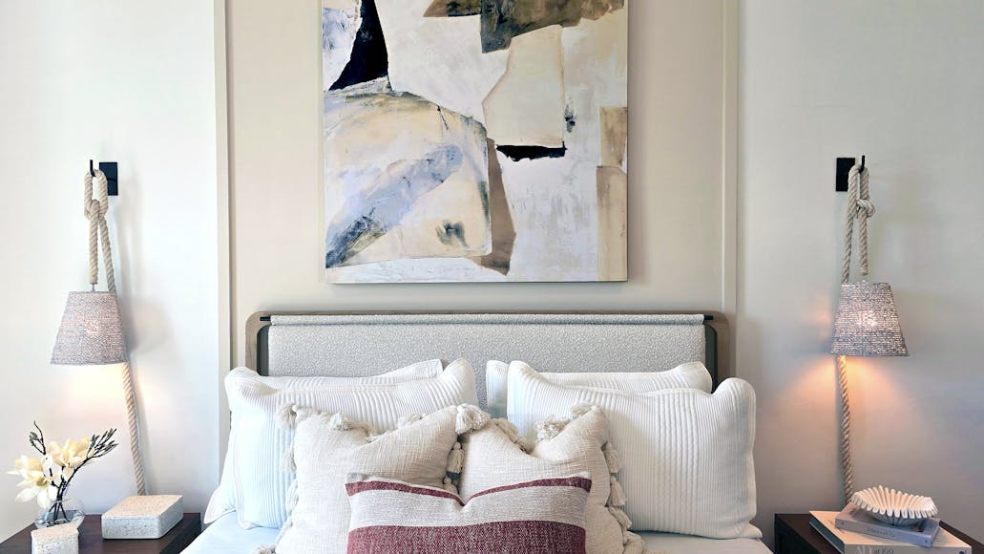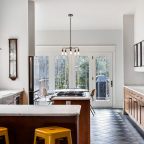
Tips for Bedroom Lighting: Create the Perfect Atmosphere
Now, whilst you will probably want a lot of light in your kitchen, your bedroom is likely to be a different story altogether. But what should you focus on?
Essential Tips for Bedroom Lighting: Create the Perfect Atmosphere
From soft, ambient lighting to task lighting for reading, there are various ways to create a warm and inviting atmosphere in your bedroom. Here are some essential tips to help master bedroom lighting and transform your space into a tranquil retreat.
1. Layer Your Lighting
One of the most effective ways to create the perfect atmosphere in your bedroom is by layering different types of lighting. Layering involves using multiple light sources to achieve the right balance of brightness and mood. Here are the three main types of lighting to consider:
- Ambient Lighting: This is the general lighting that provides overall illumination for the room. Ceiling lights, chandeliers, or recessed lighting are common options. Aim for soft, even lighting to avoid harsh shadows.
- Task Lighting: Task lighting is focused on specific activities, such as reading, dressing, or applying makeup. Consider using table lamps, wall sconces, or pendant lights near your bedside or vanity.
- Accent Lighting: Accent lighting is used to highlight specific features in the room, such as artwork, architectural elements, or decorative items. LED strip lights, track lighting, or spotlights can be ideal for this purpose.
By combining these different types of lighting, you can adjust the light levels in your bedroom to suit various activities and moods.
2. Choose Adjustable Lighting Fixtures
Flexibility is key when it comes to bedroom lighting. Having adjustable lighting allows you to control the intensity and direction of light based on your needs.
- Dimmable lights: Installing dimmable switches for your ceiling lights and lamps gives you full control over the brightness in the room. Whether you're looking for bright lighting to get ready in the morning or soft, relaxing light for the evening, dimmers provide the perfect solution.
- Adjustable lamps: Task lighting, like bedside lamps or desk lamps with adjustable arms or heads, is essential for creating optimal lighting while reading or working. This allows you to direct light exactly where you need it.
3. Consider Natural Light
While artificial lighting is essential for creating the right ambience, don’t forget about natural light. Natural light can dramatically change the feel of a bedroom, making it feel more spacious and airy.
To maximise natural light, consider the placement of windows and whether adding larger windows or skylights could benefit the space. Skylights, in particular, are a great way to bring in more natural light, especially if your bedroom is located in a loft or attic space. They allow sunlight to pour into the room, brightening up the space and providing a natural source of light throughout the day.
4. Use Warm Light for Relaxation
For most bedrooms, especially those used for sleeping, it's important to opt for warm-toned lighting. Warm light (around 2700K) creates a relaxing environment, perfect for winding down before bed. Avoid using cool-toned or blue light, as it can interfere with the body’s production of melatonin, the hormone responsible for regulating sleep.
Incorporating warm light bulbs into your bedside lamps, ceiling fixtures, and accent lights can help create a calm and peaceful environment conducive to sleep.
5. Incorporate Task-Specific Lighting
In addition to general lighting, consider task-specific lighting for activities you frequently do in your bedroom, such as reading or dressing.
- Reading lights: If you enjoy reading before bed, opt for adjustable wall-mounted sconces or clip-on reading lamps that can be positioned over your bed. These allow for focused light without disturbing your partner or illuminating the entire room.
- Dressing area lighting: If you have a vanity or wardrobe area, install task lighting that is bright and even, ideally at eye level. This ensures you have sufficient light for getting dressed or applying makeup without harsh shadows.
6. Consider Lighting for Small Spaces
If your bedroom is small, lighting can help create the illusion of space. For smaller rooms, opt for a combination of soft, ambient lighting and mirror-enhancing lighting.
- Mirrors: Strategic placement of mirrors in the bedroom can amplify the effect of both natural and artificial light. Mirrors reflect light, making the space appear larger and brighter.
- Wall-mounted lighting: Wall-mounted lights, such as sconces, can save valuable space on bedside tables and create a sleek, modern look. They also prevent floor clutter, making the room feel more open.
7. Add Statement Lighting for Style
While functionality is crucial, the right lighting can also serve as a design element in your bedroom. Statement lighting pieces, such as bold pendant lights or unique chandeliers, can add personality and flair to the room.
- Pendant lights: A stylish pendant light hanging over the bed or in the centre of the room can serve as a focal point, bringing character and charm to the space.
- Decorative lamps: Decorative table lamps on your nightstand or dresser can add both function and style. Choose lamps with interesting shapes, textures, or colours that complement your room's decor.
8. Experiment with Smart Lighting
Smart lighting is an innovative way to enhance your bedroom's functionality. With smart bulbs or integrated systems, you can control your lights remotely or set up lighting schedules. You can also sync the lighting to your daily routine or control the lights with voice commands.
- Smart bulbs: These bulbs allow you to adjust the brightness and colour of your lights using a smartphone app or voice assistant. Set the mood for a relaxing evening or change the light temperature depending on the time of day.
- Lighting automation: With smart lighting systems, you can create preset lighting schedules, so your lights automatically adjust to suit your needs, whether you're waking up in the morning or winding down in the evening.
9. Pay Attention to Lighting Placement
The placement of your lighting fixtures is just as important as the type of lighting you choose. Position lights strategically to enhance the functionality and aesthetics of the room.
- Nightstands: Place lamps on your nightstands to ensure convenient and accessible lighting for bedtime reading or late-night tasks.
- Ceiling lights: For larger rooms, consider using a central ceiling light, paired with accent lights around the room. This helps to evenly distribute light while avoiding harsh shadows or overly bright spots.
Conclusion
Creating the perfect lighting for your bedroom is about balancing both aesthetics and functionality. By layering different types of lighting, opting for adjustable fixtures, maximising natural light, and incorporating smart lighting options, you can design a space that is not only beautiful but also comfortable and relaxing. Whether you’re reading, getting ready for bed, or simply unwinding, the right lighting can transform your bedroom into the perfect sanctuary.













